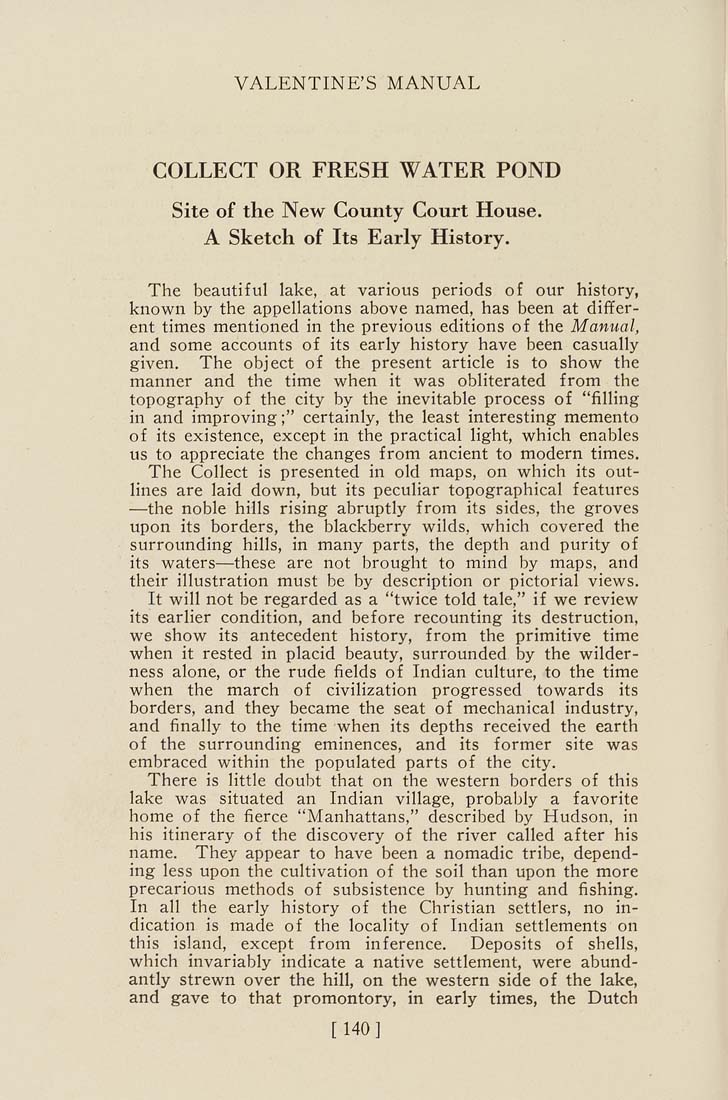VALENTINE'S MANUAL
COLLECT OR FRESH WATER POND
Site of the New County Court House.
A Sketch of Its Early History.
The beautiful lake, at various periods of our history,
known by the appellations above named, has been at differ-
ent times mentioned in the previous editions of the Manual,
and some accounts of its early history have been casually
given. The object of the present article is to show the
manner and the time when it was obliterated frora the
topography of the city by the inevitable process of "filling
in and iinproving;" certainly, the least interesting meraento
of its existence, except in the practical light, which enables
us to appreciate the changes from ancient to modern tiraes.
The CoIIect is presented in old raaps, on which its out-
lines are laid down, but its peculiar topographical features
—the noble hiUs rising abruptly from its sides, the groves
upon its borders, the blackberry wilds, which covered the
surrounding hills, in many parts, the depth and purity of
its waters—these are not brought to mind by maps, and
their illustration must be by description or pictorial views.
It wiU not be regarded as a "twice told tale," if we rcview
its earlier condition, and before recounting its destruction,
we show its antecedent history, frora the priraitive tirae
when it rested in placid beauty, surrounded by the wilder-
ness alone, or the rude fields of Indian culture, to the tirae
when the march of civilization progressed towards its
borders, and they became the seat of mechanical industry,
and finally to the tirae when its depths received the earth
of the surrounding eminences, and its former site was
erabraced within the populated parts of the city.
There is little doubt that on the western borders of this
lake was situated an Indian village, probably a favorite
horae of the fierce "Manhattans," described by Hudson, in
his itinerary of the discovery of the river called after his
narae. They appear to have been a nomadic tribe, depend-
ing less upon the cultivation of the soil than upon the raore
precarious methods of subsistence by hunting and fishing.
In all the early history of the Christian settlers, no in-
dication is made of the locality of Indian settlements on
this island, except from inference. Deposits of shells,
which invariably indicate a native settlement, were abund-
antly strewn over the hill, on the western side of the lake,
and gave to that proraontory, in early tiraes, the Dutch
[140]
|








